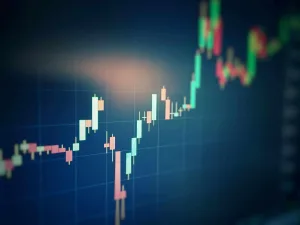What are the historical price trends of metals traded on the LME?
3 min read
What are the historical price trends of metals traded on the LME?
In the dynamic world of metals trading, historical price trends serve as valuable insights for market participants seeking to understand the ebbs and flows of the marketplace. The London Metal Exchange (LME), as a leading marketplace for metals trading, offers a wealth of historical data that provides a glimpse into the past performance of metals prices. But what do these historical price trends reveal, and how can they inform trading strategies and investment decisions? Join us as we delve into the historical price trends of metals traded on the LME, uncovering valuable insights that shed light on the evolution of metal markets and the factors driving price movements.
Overview of Historical Price Trends
The LME has a rich history dating back to its establishment in 1877, making it one of the oldest and most respected commodities exchanges in the world. Over the years, the exchange has played a central role in shaping the dynamics of metal markets, providing transparent price discovery, liquidity, and risk management solutions to market participants. The historical price data available from the LME offers a comprehensive view of price trends for a range of metals, including copper, aluminum, nickel, zinc, and lead, among others.
Factors Influencing Price Trends
A variety of factors can influence historical price trends of metals traded on the LME, including supply and demand dynamics, economic conditions, geopolitical events, technological advancements, and market sentiment, among others. For example, periods of economic growth and industrial expansion tend to drive demand for metals, leading to upward price trends, while supply disruptions or geopolitical tensions may cause price volatility and fluctuations. By analyzing historical price trends in conjunction with these factors, market participants can gain valuable insights into market dynamics and identify potential opportunities and risks.
Long-Term Trends and Cyclical Patterns
Historical price data from the LME reveals long-term trends and cyclical patterns that characterize metal markets over time. For example, metals such as copper and aluminum have historically experienced cycles of boom and bust, driven by changes in global economic conditions, infrastructure spending, and technological innovation. By studying these long-term trends and cyclical patterns, traders and investors can develop a better understanding of market dynamics and adjust their strategies accordingly to capitalize on opportunities and mitigate risks.
Volatility and Risk Management
Historical price data also highlights the inherent volatility of metal markets and the importance of effective risk management strategies for market participants. Metals prices can be subject to sudden and significant fluctuations, driven by factors such as supply disruptions, demand shocks, speculative activity, and external events. By analyzing historical price trends and volatility patterns, market participants can implement risk management measures such as hedging, diversification, and position sizing to protect their portfolios and minimize potential losses during periods of market turbulence.
Conclusion: Navigating the Metal Market
In conclusion, historical price trends of metals traded on the London Metal Exchange offer valuable insights into the evolution of metal markets and the factors driving price movements. By studying these trends and patterns, market participants can gain a deeper understanding of market dynamics, identify potential opportunities and risks, and develop more informed trading strategies and investment decisions. As we navigate the complexities of the metal market, let us leverage the rich historical data available from the LME to inform our actions and drive success in the ever-evolving world of commodities trading.
As we navigate the complexities of the metal market, let us leverage the rich historical data available from the LME to inform our actions and drive success in the ever-evolving world of commodities trading.






